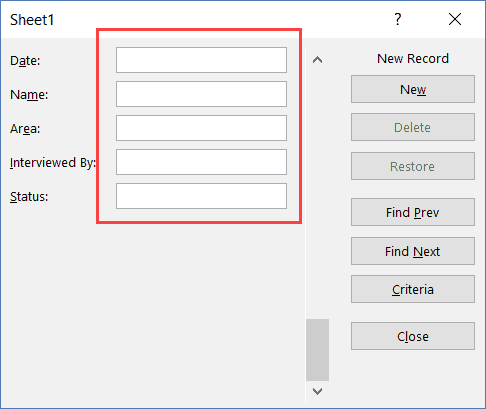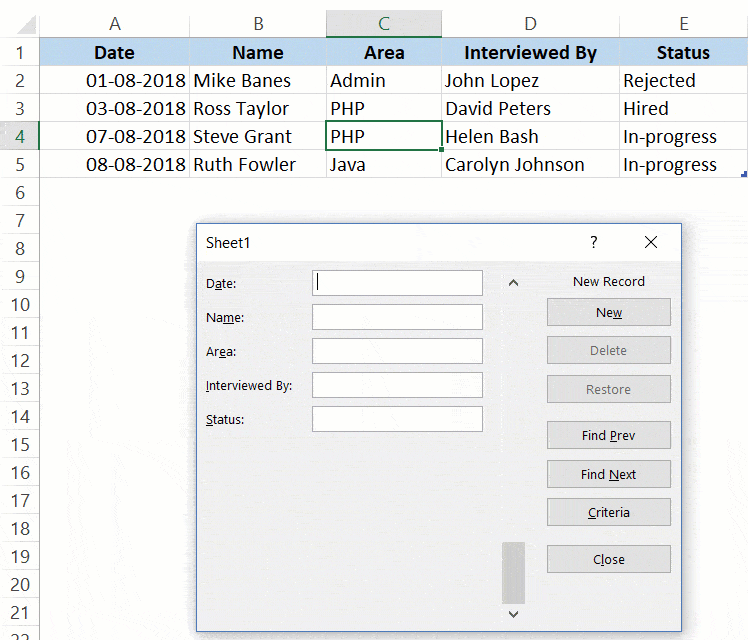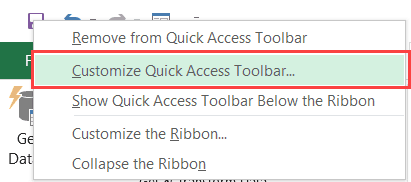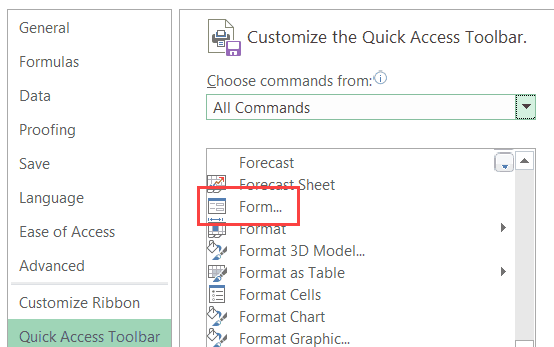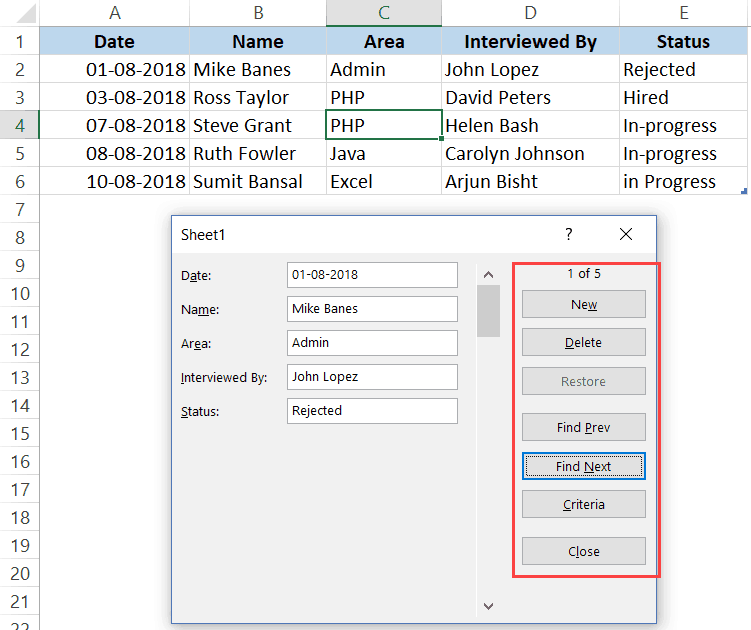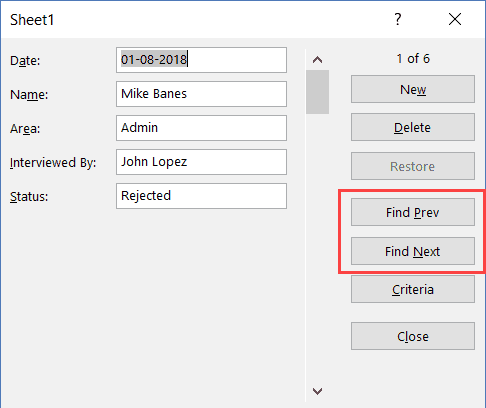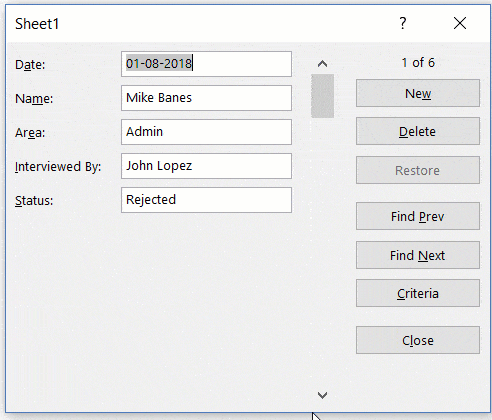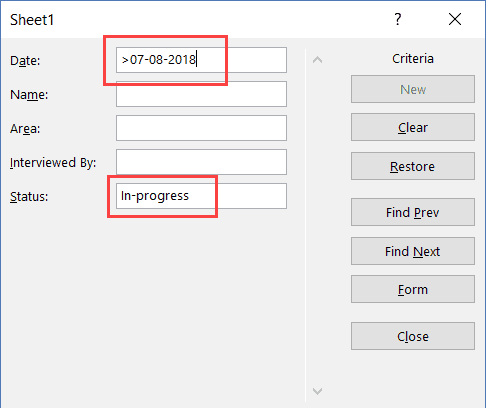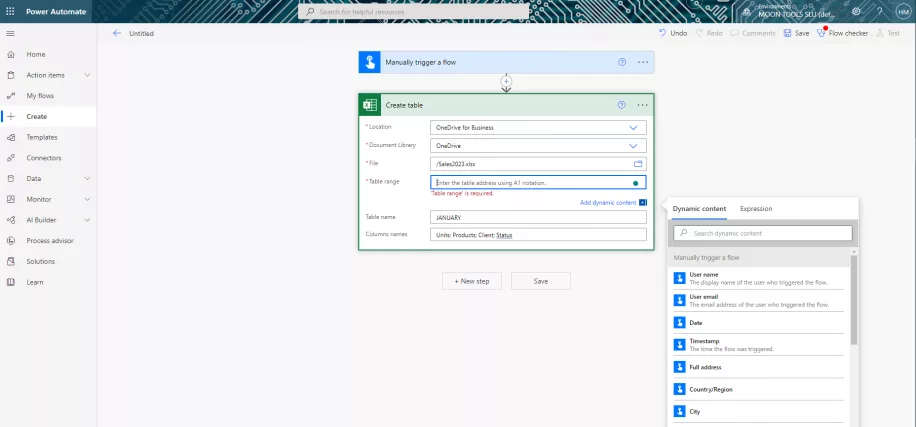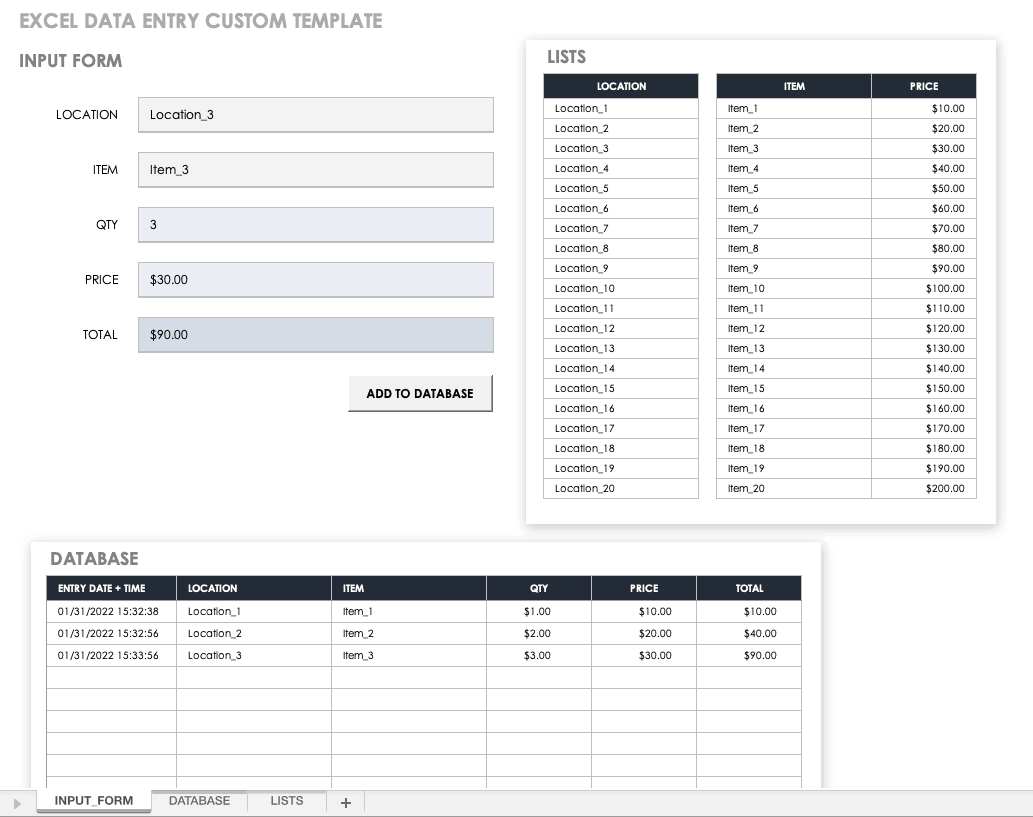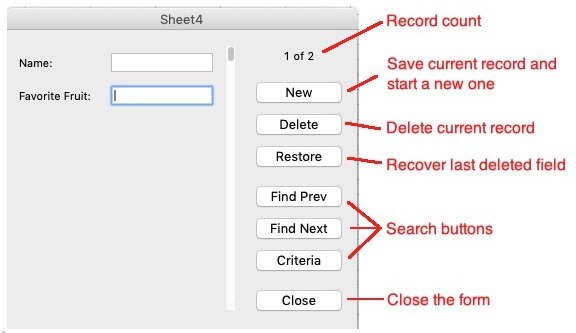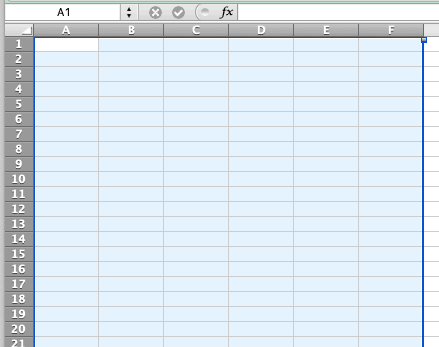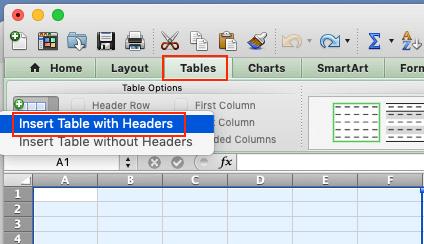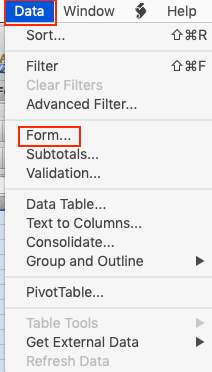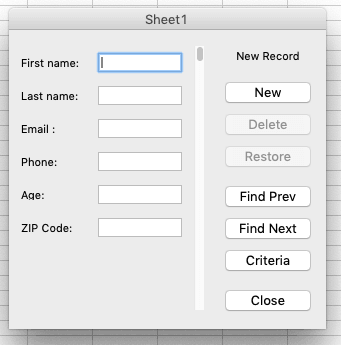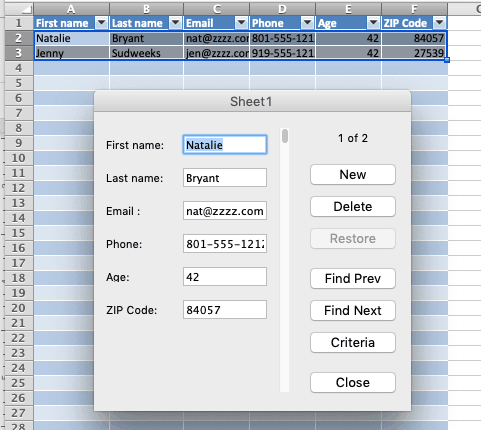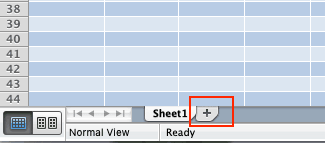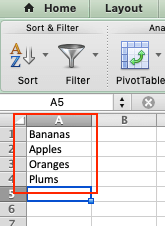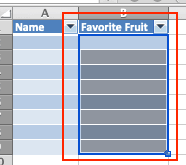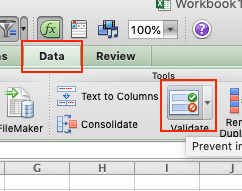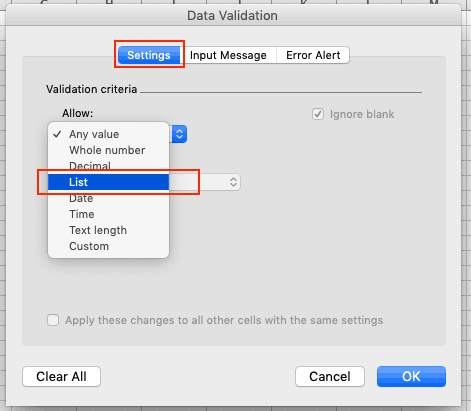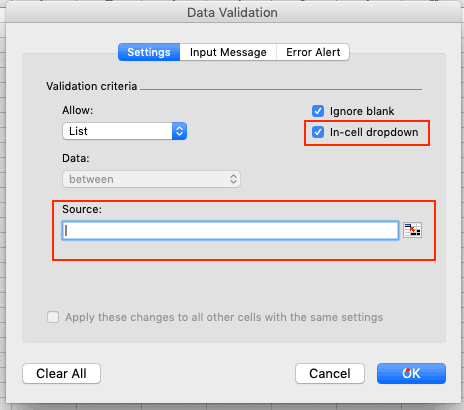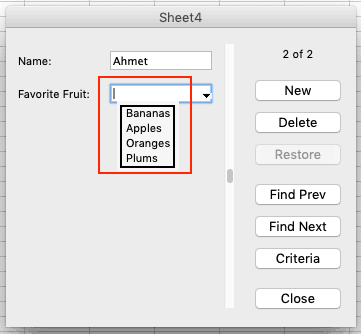Watch the Video on Using Data Entry Forms in Excel
Below is a detailed written tutorial about Excel Data Entry form in case you prefer reading over watching a video.
Excel has many useful features when it comes to data entry.
And one such feature is the Data Entry Form.
In this tutorial, I will show you what are data entry forms and how to create and use them in Excel.
Why Do You Need to Know About Data Entry Forms?
Maybe you don’t!
But if data entry is a part of your daily work, I recommend you check out this feature and see how it can help you save time (and make you more efficient).
There are two common issues that I have faced (and seen people face) when it comes to data entry in Excel:
- It’s time-consuming. You need to enter the data in one cell, then go to the next cell and enter the data for it. Sometimes, you need to scroll up and see which column it is and what data needs to be entered. Or scroll to the right and then come back to the beginning in case there are many columns.
- It’s error-prone. If you have a huge data set which needs 40 entries, there is a possibility you may end up entering something that was not intended for that cell.
A data entry form can help by making the process faster and less error-prone.
Before I show you how to create a data entry form in Excel, let me quickly show you what it does.
Below is a data set that is typically maintained by the hiring team in an organization.
Every time a user has to add a new record, he/she will have to select the cell in the next empty row and then go cell by cell to make the entry for each column.
While this is a perfectly fine way of doing it, a more efficient way would be to use a Data Entry Form in Excel.
Below is a data entry form that you can use to make entries to this data set.
The highlighted fields are where you would enter the data. Once done, hit the Enter key to make the data a part of the table and move on to the next entry.
Below is a demo of how it works:
As you can see, this is easier than regular data entry as it has everything in a single dialog box.
Data Entry Form in Excel
Using a data entry form in Excel needs a little pre-work.
You would notice that there is no option to use a data entry form in Excel (not in any tab in the ribbon).
To use it, you will have to first add it to the Quick Access Toolbar (or the ribbon).
Adding Data Entry Form Option To Quick Access Toolbar
Below are the steps to add the data entry form option to the Quick Access Toolbar:
- Right-click on any of the existing icons in the Quick Access Toolbar.
- Click on ‘Customize Quick Access Toolbar’.
- In the ‘Excel Options’ dialog box that opens, select the ‘All Commands’ option from the drop-down.
- Scroll down the list of commands and select ‘Form’.
- Click on the ‘Add’ button.
- Click OK.
The above steps would add the Form icon to the Quick Access Toolbar (as shown below).
Once you have it in QAT, you can click any cell in your dataset (in which you want to make the entry) and click on the Form icon.
Note: For Data Entry Form to work, your data should be in an Excel Table. If it isn’t already, you’ll have to convert it into an Excel Table (keyboard shortcut – Control + T).
Parts of the Data Entry Form
A Data Entry Form in Excel has many different buttons (as you can see below).
Here is a brief description of what each button is about:
- New: This will clear any existing data in the form and allows you to create a new record.
- Delete: This will allow you to delete an existing record. For example, if I hit the Delete key in the above example, it will delete the record for Mike Banes.
- Restore: If you’re editing an existing entry, you can restore the previous data in the form (if you haven’t clicked New or hit Enter).
- Find Prev: This will find the previous entry.
- Find Next: This will find the next entry.
- Criteria: This allows you to find specific records. For example, if I am looking for all the records, where the candidate was Hired, I need to click the Criteria button, enter ‘Hired’ in the Status field and then use the find buttons. Example of this is covered later in this tutorial.
- Close: This will close the form.
- Scroll Bar: You can use the scroll bar to go through the records.
Now let’s go through all the things you can do with a Data Entry form in Excel.
Note that you need to convert your data into an Excel Table and select any cell in the table to be able to open the Data Entry form dialog box.
If you haven’t selected a cell in the Excel Table, it will show a prompt as shown below:
Creating a New Entry
Below are the steps to create a new entry using the Data Entry Form in Excel:
- Select any cell in the Excel Table.
- Click on the Form icon in the Quick Access Toolbar.
- Enter the data in the form fields.
- Hit the Enter key (or click the New button) to enter the record in the table and get a blank form for next record.
Navigating Through Existing Records
One of the benefits of using Data Entry Form is that you can easily navigate and edit the records without ever leaving the dialog box.
This can be especially useful if you have a dataset with many columns. This can save you a lot of scrolling and the process of going back and forth.
Below are the steps to navigate and edit the records using a data entry form:
- Select any cell in the Excel Table.
- Click on the Form icon in the Quick Access Toolbar.
- To go to the next entry, click on the ‘Find Next’ button and to go to the previous entry, click the ‘Find Prev’ button.
- To edit an entry, simply make the change and hit enter. In case you want to revert to the original entry (if you haven’t hit the enter key), click the ‘Restore’ button.
You can also use the scroll bar to navigate through entries one-by-one.
The above snapshot shows basic navigation where you are going through all the records one after the other.
But you can also quickly navigate through all the records based on criteria.
For example, if you want to go through all the entries where the status is ‘In-progress’, you can do that using the below steps:
Criteria is a very useful feature when you have a huge dataset, and you want to quickly go through those records that meet a given set of criteria.
Note that you can use multiple criteria fields to navigate through the data.
For example, if you want to go through all the ‘In-progress’ records after 07-08-2018, you can use ‘>07-08-2018’ in the criteria for ‘Date’ field and ‘In-progress’ as the value in the status field. Now when you navigate using Find Prev/Find Next buttons, it will only show records after 07-08-2018 where the status is In-progress.
You can also use wildcard characters in criteria.
For example, if you have been inconsistent in entering the data and have used variations of a word (such as In progress, in-progress, in progress, and inprogress), then you need to use wildcard characters to get these records.
Below are the steps to do this:
- Select any cell in the Excel table.
- Click on the Form icon in the Quick Access Toolbar.
- Click the Criteria button.
- In the Status field, enter *progress
- Use the Find Prev/Find Next buttons to navigate through the entries where the status is In-Progress.
This works as an asterisk (*) is a wildcard character that can represent any number of characters in Excel. So if the status contains the ‘progress’, it will be picked up by Find Prev/Find Next buttons no matter what is before it).
Deleting a Record
You can delete records from the Data Entry form itself.
This can be useful when you want to find a specific type of records and delete these.
Below are the steps to delete a record using Data Entry Form:
- Select any cell in the Excel table.
- Click on the Form icon in the Quick Access Toolbar.
- Navigate to the record you want to delete
- Click the Delete button.
While you may feel that this all looks like a lot of work just to enter and navigate through records, it saves a lot of time if you’re working with lots of data and have to do data entry quite often.
Restricting Data Entry Based on Rules
You can use data validation in cells to make sure the data entered conforms to a few rules.
For example, if you want to make sure that the date column only accepts a date during data entry, you can create a data validation rule to only allow dates.
If a user enters a data that is not a date, it will not be allowed and the user will be shown an error.
Here is how to create these rules when doing data entry:
- Select the cells (or even the entire column) where you want to create a data validation rule. In this example, I have selected column A.
- Click the Data tab.
- Click the Data Validation option.
- In the ‘Data Validation’ dialog box, within the ‘Settings’ tab, select ‘Date’ from the ‘Allow’ drop down.
- Specify the start and the end date. Entries within this date range would be valid and rest all would be denied.
- Click OK.
Now, if you use the data entry form to enter data in the Date column, and if it isn’t a date, then it will not be allowed.
You will see a message as shown below:
Similarly, you can use data validation with data entry forms to make sure users don’t end up entering the wrong data. Some examples where you can use this is numbers, text length, dates, etc.
Here are a few important things to know about Excel Data Entry Form:
- You can use wildcard characters while navigating through the records (through criteria option).
- You need to have an Excel table to be able to use the Data Entry Form. Also, you need to have a cell selected in it to use the form. There is one exception to this though. If you have a named range with the name ‘Database’, then the Excel Form will also refer to this named range, even if you have an Excel table.
- The field width in the Data Entry form is dependent on the column width of the data. If your column width is too narrow, the same would be reflected in the form.
- You can also insert bullet points in the data entry form. To do this, use the keyboard shortcut ALT + 7 or ALT + 9 from your numeric keypad. Here is a video about bullet points.
You May Also Like the Following Excel Tutorials:
- 100+ Excel Interview Questions.
- Drop Down Lists in Excel.
- Find and Remove Duplicates in Excel.
- Excel Text to Columns.
Regardless of the company size, anyone working with data regularly can benefit from quick and easy ways to work with data. If you work with smaller datasets, entering the data manually may be the way to go. However, what if your dataset contains thousands of rows or columns? You’re now probably wondering, can I automate data entry in Excel?
In this guide, you’ll learn the importance of using Excel data entry forms and how to create these entry forms in Excel using different features. Covering 4 different methods, you’ll learn how to create a data entry form in Excel using its built-in feature, VBA, Macros, and finally, Power Automate
Why Use Excel Data Entry Forms?
Excel data entry forms are templates for data entry. Think of it as additional support to enter data in your spreadsheet, which can range across multiple columns and rows. It’s especially useful for those working with multiple category lists or large databases. The main reasons why you may want to use data entry forms include:
- Avoid manual errors: Input data in bulk following a structure to avoid typos that may distort your whole dataset.
- Save time: Think about having to input over 1,000 rows without making mistakes. Excel automation tools save you hours of work.
- Maintain original structure: If your data is already categorized, set the structure beforehand and place data where it should be.
- Automate processes: Create flows with Power Automate, which can “Run” automatically at specific intervals.
How Do I Create a Data Entry Form in Excel?
To create a data entry form in Excel, you don’t need to learn to program or have coding skills. Luckily, Office 365 includes applications and features that do the work for you. You simply need to know where to look for these tools and how to make them work for you.
How to Create a Data Entry Form Using Excel Forms?
To create your first data entry form using “Forms”, an Excel built-in feature, you’ll first have to add it to the Quick Access Toolbar (QAT).
How to Add Excel Forms to the Quick Access Toolbar?
- 1. Open your Excel spreadsheet and click on the small arrow at the top, as shown below. Select “More Commands…” from the drop-down list.
Create A Data Entry Form in Excel (4 Easy Ways) — Customize Quick Access Toolbar
- 2. Select “Quick Access Toolbar” from the left-side menu, and then “Commands Not in the Ribbon” from the “Choose commands from” drop-down menu.
Create A Data Entry Form in Excel (4 Easy Ways) — Commands Not in the Ribbon
- 3. Scroll down the list until you find the “Form” feature and to your QAT by clicking on the “Add” button, placed in the center. Click “OK” to finish.
Create A Data Entry Form in Excel (4 Easy Ways) — OK to finish
Now that it’s easily accessible, you can begin to use it.
- 4. Click on any row item and then the Form icon you just created, located in the green ribbon at the top of your screen.
Create A Data Entry Form in Excel (4 Easy Ways) — Click on Form icon
- 5. A window will pop up that shows the table information contained in “Sheet 1”. To the left, the form provides the column names, followed by the data already contained in the cells. To create a new data entry, aka “record”, click on the “New” button, which appears to the right.
Create A Data Entry Form in Excel (4 Easy Ways) — Click New
- 6. You can start inputting your data in the blank fields. Once you’re done, click “Close”.
Create A Data Entry Form in Excel (4 Easy Ways) — Enter data
This is a straightforward way to use the data entry form feature in Excel. However, for larger datasets, the following ways will be more helpful.
How to Create a Data Entry Form Using VBA?
This method is the preferred option for users that wish to create a more visual data entry form, as it makes it easier to manage all elements required to structure your data. To create a data entry form using Microsoft Visual Basic for Applications (VBA), you’ll first need to add this feature to your Ribbon for quicker access.
Add VBA to Your Ribbon Toolbar
- 1. Repeat steps 1 and 2 from the previous section.
- 2. Select “Customize Ribbon” from the left-side menu and then “Main Tabs” from the “Customize the Ribbon” drop-down menu to the right.
Create A Data Entry Form in Excel (4 Easy Ways) — Customize Ribbon
- 3. Tick the “Developer” option and then “OK” to automatically enable this tab on your Ribbon. The VBA feature should be included automatically in newer Excel versions.
Create A Data Entry Form in Excel (4 Easy Ways) — Developer tab
- 4. Go to your new “Developer” tab in your Ribbon, and then click on the “VBA” feature button.
Create A Data Entry Form in Excel (4 Easy Ways) — VBA button
- 5. Excel will automatically launch the VBA window. Go to “Insert” and then select “UserForm”.
Create A Data Entry Form in Excel (4 Easy Ways) — UserForm
- 6. You’ll find a small “Toolbox” window and the “UserForm” to the right. This is the space where you can create your own by including any elements you wish.
Create A Data Entry Form in Excel (4 Easy Ways) — Toolbox elements
- 7. Select one of the elements from the “Toolbox” and drag it to the “UserForm1” box. Here, we have selected the “A” button to create a “Label”.
Create A Data Entry Form in Excel (4 Easy Ways) — Drag elements
To change the name of the “Label” simply double-click on it. This same system can be used for any of the remaining elements, including text boxes, lists, or commands. To save your work, you will need to save the Excel file as a macro-enabled workbook, i.e., in “.xlsm” format.
Power Automate & Excel: Examples And Use Cases
Power Automate allows you to create workflows, e.g. for data collection. Here’s how to combine Power Automate with Excel to automate tedious daily tasks.
READ MORE

How to Create a Data Entry Form Using Power Automate?
To create a data entry form in Excel using Power Automate, you first need to make sure the data is stored in Excel online and in table format.
- 1. Launch Power Automate and click on “Create” and then “Instant cloud flow”.
Create A Data Entry Form in Excel (4 Easy Ways) — Click on Recorded Macro
- 2. Select “Manually trigger a flow” from the options.
Create A Data Entry Form in Excel (4 Easy Ways) — Click on Recorded Macro
- 3. Click on “Manually trigger a flow” to access the “Add an input” option.
Create A Data Entry Form in Excel (4 Easy Ways) — Click on Recorded Macro
- 4. Select the type of data to enter.
Create A Data Entry Form in Excel (4 Easy Ways) — Click on Recorded Macro
- 5. After each data entry type, you can click on the vertical ellipsis icon to create an Excel data entry form with a drop-down list. Once you finish, click on “New Step”.
Create A Data Entry Form in Excel (4 Easy Ways) — Drop-down list
- 6. Select “Excel Online (Business)” and then “Create table” from the “Actions” tab. This will connect your form with the spreadsheet you’d like to enter data in.
Create A Data Entry Form in Excel (4 Easy Ways) — Click on Recorded Macro
- 7. Add the “Location”, “Document Library”, the name of the “File”, and the “Table range” where your form is created. Note that the “Column names” will need to be input using a semicolon as a separator. Once you finish, click “Save”.
Create A Data Entry Form in Excel (4 Easy Ways) — Click on Recorded Macro
You’ll see how Power Automate recommends testing the flow. To test, simply click on the “Test” button to the far right.
How to Create a Data Entry Form Using Macros?
Macros can be used in Excel to automate tasks that are usually very time-consuming, such as manually entering large datasets in a spreadsheet. The great thing about using VBA Macros is that you can do it straight from your spreadsheet. From creating tables to connecting your spreadsheet with external data sources, this feature offers limitless possibilities in task automation.
To get a more profound understanding of how it works, check out our guide on How to Use Macros in Excel to Automate Tasks.
Want to Boost Your Team’s Productivity and Efficiency?
Transform the way your team collaborates with Confluence, a remote-friendly workspace designed to bring knowledge and collaboration together. Say goodbye to scattered information and disjointed communication, and embrace a platform that empowers your team to accomplish more, together.
Key Features and Benefits:
- Centralized Knowledge: Access your team’s collective wisdom with ease.
- Collaborative Workspace: Foster engagement with flexible project tools.
- Seamless Communication: Connect your entire organization effortlessly.
- Preserve Ideas: Capture insights without losing them in chats or notifications.
- Comprehensive Platform: Manage all content in one organized location.
- Open Teamwork: Empower employees to contribute, share, and grow.
- Superior Integrations: Sync with tools like Slack, Jira, Trello, and more.
Limited-Time Offer: Sign up for Confluence today and claim your forever-free plan, revolutionizing your team’s collaboration experience.
Conclusion
Excel is the go-to solution for data storage and management. However, inputting the data is the first and crucial step in any process. If you work in inventory management or a business with high-volume record-keeping, then you’ll most certainly benefit from automation tools in Excel.
Automating Excel functions is possible through powerful integrated features such as VBA, Macros, and Power Automate. You should now feel comfortable with these tools and have the necessary know-how skills to create a data entry form in Excel using 4 easy but powerful ways.
Usually, the data in Excel spreadsheets is presented in lists of rows, and each row represents a data record. Excel offers an easy way to work with this data type through a data entry form that Excel can automatically generate. This form of data works with a normal data range or a table.
Unfortunately, the data entry form works only with data arranged in rows. To work with data arranged in columns, first, you need to transpose it.
The command to access the data form is not on the Ribbon, but you can do one of the following:
- Add it to your own menu:

- Add it in the Quick Access toolbar:

To use the data form, follow these steps:
1. Arrange the data so that Excel can recognize it as a table by entering column headings in the first row of the data entry range.
2. Select data with headers:

See how to select rows and columns by keyboard and the quick way to select all cells.
3. Click the Form button on your own menu or in the Quick Access toolbar. Excel displays a dialog box customized to your data:

Notes:
- To move between the text boxes, press Tab.
- You can’t modify formulas using the data entry form — the formula result appears as text, not as an edit box.
- To add a new row to your table, click the New button:
- You can also use the form to edit the existing data.
See also this tip in French:
Comment utiliser un formulaire pour la saisie de données.
Please, disable AdBlock and reload the page to continue
Today, 30% of our visitors use Ad-Block to block ads.We understand your pain with ads, but without ads, we won’t be able to provide you with free content soon. If you need our content for work or study, please support our efforts and disable AdBlock for our site. As you will see, we have a lot of helpful information to share.
Data Entry Form is a form that helps to enter the data with the help of a form in which the data can be added, searched, and previous data can be deleted. Data entry in Excel without forms can be very time-consuming. There are many two major issues faced while conducting data entry without forms in Excel:
- Time-consuming: Without forms, data needs to be entered in one cell at a time, then go to the next cell and enter the data for that cell, and so on. Sometimes, due to confusion the user might need to scroll up and see which column is it and what data needs to be entered and then come back to the current position. Similarly, in the case when the user needs to scroll right and then comes back to the beginning.
- Error-prone: If there is a huge dataset that needs 100 entries to be entered in the form. In that case, there may be a possibility that the user unintentionally enters the wrong data in the cell.
Data entry using forms in Excel helps to overcome all these limitations and makes the task of entering data less time-consuming and less error-prone. In this article, Let’s have a look into how to Data Entry Form in Excel.
Adding Data Entry Form Option To Quick Access Toolbar:
Step 1: To add the Data Entry Form option on Quick Access Toolbar. First, right-click on any of the existing icons in the Quick Access Toolbar. Then, click on “Customize Quick Access Toolbar…”
Step 2: In the “Excel Options” box select “All Commands” in “Choose commands from”.
Step 3: Select “Form…” from the list of commands then click on “Add>>”, and then click Ok.
Step 4: Now, the Form icon is added on Quick Access Toolbar.
Using Data Entry Form: This section will discuss the steps to use the data entry form in Excel.
Step 1: Select any cell from any column and then click the “Form” icon.
Step 2: After that to add a new row click on “New” in the Sheet1 box.
Step 3: Then, Add Name, Age, and Class, and then click Close.
Now, our row is added.
To Find Next Data- Follow the steps below to find the next occurrence of the required data-
Step 1: Select any cell from any column and then click the “Form” icon.
Step 2: Click on “Find Next” in the Sheet1 box.
To Find Previous Data: Follow the steps below to find the previous occurrence of the required data-
Step 1: Select any cell from any column and then click the “Form” icon.
Step 2: Click on “Find Prev” in the Sheet1 box.
To Delete Row: Follow the steps below to delete a row-
Step 1: Select any cell from any column and then click the “Form” icon.
Step 2: Click on “Delete” in the Sheet1 box.
Step 3: Click Ok in the Microsoft Excel box.
Step 4: The selected row is deleted.
To Get All Dataset Using Given Set Of Criteria: Follow the steps below to delete a row-
Step 1: Select any cell from any column and then click the “Form” icon.
Step 2: Click on “Criteria” in the Sheet1 box.
Step 3: Criteria is used to get the required dataset, and then use “Find Prev” or “Find Next” to get the previous value or next value of that criteria.
Step 4: The required data is obtained using the criteria.
Using Excel to store data records is an oft-used — if sometimes frustrating — alternative to setting up a database. However, the data entry form in Excel is a pivotal tool. This article provides all the steps necessary to get started with the Excel data entry form. If you’re looking for something easier, download the free Excel template to get started immediately.
Download a Free Excel Data Entry Form Template
Download Excel Data Entry Form Template
Use this free template to create a customized data entry form that allows you to apply multiple restrictions to a field (such as numeric and five digits long for a ZIP code field), make a field mandatory, or make it unique from all other records (for example, for an order number). Enter the number of fields needed for each record, select a title and options for each field in the record, and then move to the second sheet to start entering data.
What Are Excel Forms?
Excel offers the ability to make data entry easier by using a form, which is a dialog box with the fields for one record. The form allows data entry, a search function for existing entries, and the ability to edit or delete the data.
The example below has two fields per record. The form allows up to 32 fields per record.
In addition to the navigation buttons, you can use the following keyboard commands to navigate through the form:
- Tab: Move to the next field.
- Shift+Tab: Move to the previous field.
- Enter: Save the record and start a new one.
Benefits of Using an Excel Data Entry Form
In addition to being able to enter data quickly and accurately, the form allows users to see more content without scrolling because the data appears in a vertical format (rather than horizontal). The form can also include data validation, including a dropdown list of pre-selected items in a column or ensuring that an entry meets certain criteria (such as a date or character length).
How Do I Create a Data Entry Form in Excel?
In general, the steps are to select an area in the sheet, insert a table, add titles at the top of the columns, and then find the form option in the data menu. To create a form, see the steps below for your version of Excel.
How Do I Create a Data Entry Form in Excel 2016?
These instructions also apply to Excel 365, and to Excel 2019 for PC. These steps were created with a different version of Excel so the interface will look different, but the steps are the same.
- On the chosen sheet, highlight the number of columns needed.
- Open the Tables tab, click New, click Insert Table with Headers.
- Change the default column headers, and adjust the width of columns if necessary.
- Open the Data menu and click Form…
- The form will appear. The number of columns in the table will match the number of fields on the form. The column titles in the table will be the field titles on the form. You are now ready to enter data records into the form.
Inserting a Record
Type data into the first field, tab to the next field, and repeat until all fields are completed. Press Enter on your keyboard to save the data and move to the next record.
Finding a Record
Once you have entered data, you may want to find a record. To do so, click Criteria, enter the search term into the appropriate field (e.g. “Chicago” into a city field). Click Find Next. The first matching record will appear in the form (the records displayed in the sheet won’t be filtered). Click Find Next to scroll through the remaining records, or click Find Previous to scroll upward. You can use wildcard characters such as “*” and “?” when searching the records.
Editing a Record
Once the desired record is displayed in the form, select the field you want to change and edit the text. Hit Enter on your keyboard to save changes.
Deleting a Record
Once the desired record is displayed in the form, click Delete, then click OK.
How Do I Create a Data Entry Form in Excel 2013?
The steps for adding, finding, editing, and deleting a record are the same as for Excel 2016, so follow the steps above. The appearance may be slightly different. In general, the steps are to select an area in the sheet, insert a table, add titles at the top of the columns, and then find the form option in the data menu.
How Do I Create a Data Entry Form in Excel 2010?
In general, the steps are to select an area in the sheet, insert a table, add titles at the top of the columns, and then find the form option in the data menu. You can follow the steps for adding, finding, editing, and deleting a record in Excel 2016 above. Note that the interface may be slightly different.
How Do I Create a Data Entry Form in Excel 2007?
Select an area in the sheet, insert a table, add titles at the top of the columns, and then find the form option in the data menu. Follow the steps above for Excel 2016 to add, find, edit, or delete. The interface may be slightly different.
How Do I Create a Data Entry Form with a Single Click?
Adding a Drop-Down List to an Excel Data Entry Form
A drop-down menu presents a predefined list of options in a data entry form field. This is useful when you need to enter a set list of employees, products, part numbers, etc. into a field.
- Add a new sheet to the workbook (you can also use a blank sheet) by clicking the plus sign on the tabs at the bottom of the window.
While not required, it makes sense to change the name of the sheet to something like “data.” Double-click the new sheet’s title tab and type the new name.
- Enter the list of options into a column in the new sheet. If more than one field in the form needs a dropdown list, repeat the process in another column. If you have more than one field with a dropdown list, the data column for each list can be on the same sheet or on different sheets, depending on your preference.
- Return to the worksheet with the table and select the column that will have the dropdown list.
- On the ribbon, click Data, click Validate, click arrow next to the Allow field and click List.
Ensure the In-cell dropdown option is checked and put the cursor in the Source field.
- Click on the tab for the sheet with the list (in our example, the Data sheet), highlight the list of items (the sheet and cell reference will be added to the source field), and click OK.
- Show the data entry form based on the steps above. The field connected to that column will only allow entries from the list on the other sheet.
Note: In some older versions of Excel, the dropdown will not appear in the form, but the field will still be restricted to the list in on the data sheet.
Other Types of Cell Validation
In addition to a restricted list, the form fields can have other restrictions. Select the column and click Data on the ribbon, click Validate, click the Allow field, and then choose one of the options below:
- Make a Column a Date or Time: Select Date or Time. If needed, enter start and end values to constrain the starting and ending date or times.
- Make a Column Numeric: Select Whole number or Decimal. If needed, enter start and/or ending values to constrain the range.
- Restrict the Length: Select Text length. If needed, enter start and end values to constrain the range.
How Do I Create a Submit Button in Excel?
A submit button is a user-created control button that runs a macro when clicked. The macro can be any valid macro, such as sorting data, removing blank rows, or saving a sheet as a PDF.
There are two ways to create a button. One uses ActiveX, the other uses Visual Basic (VBA), so they are beyond the scope of this article. If you have experience with ActiveX or Visual Basic, Microsoft’s support site offers instructions.
How Do I Insert a UserForm in Excel?
A UserForm is an Excel tool that is similar to a data entry form. However, it is more flexible because it allows the use of checkboxes, radio buttons, multiple selections, and scrolling lists to enter data in addition to text boxes. Creating Userforms requires knowledge of Visual Basic. If you have experience with Visual Basic, a tutorial for creating UserForms can be found here or here.
How Do I Create a Data Entry Form with VBA?
A data entry form can be created with VBA in the same way as a UserForm in Excel.
Streamline Data Collection with Smartsheet Forms
Empower your people to go above and beyond with a flexible platform designed to match the needs of your team — and adapt as those needs change.
The Smartsheet platform makes it easy to plan, capture, manage, and report on work from anywhere, helping your team be more effective and get more done. Report on key metrics and get real-time visibility into work as it happens with roll-up reports, dashboards, and automated workflows built to keep your team connected and informed.
When teams have clarity into the work getting done, there’s no telling how much more they can accomplish in the same amount of time. Try Smartsheet for free, today.


